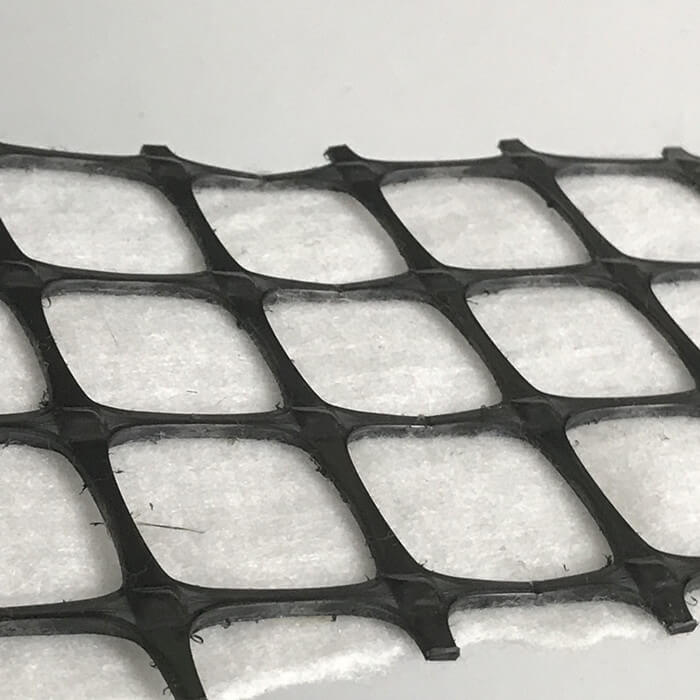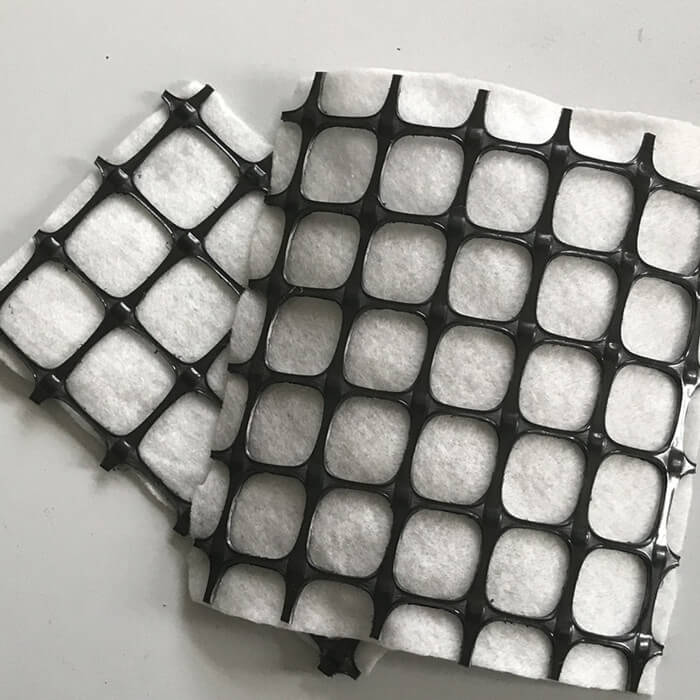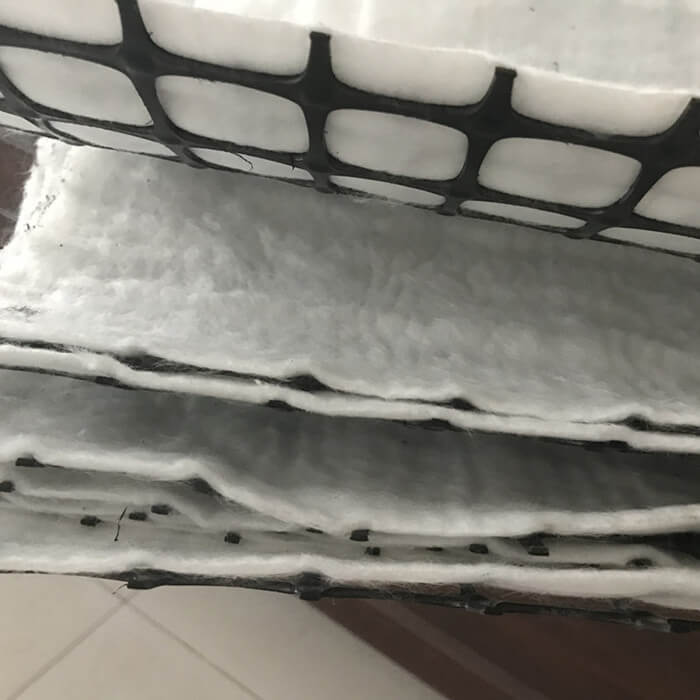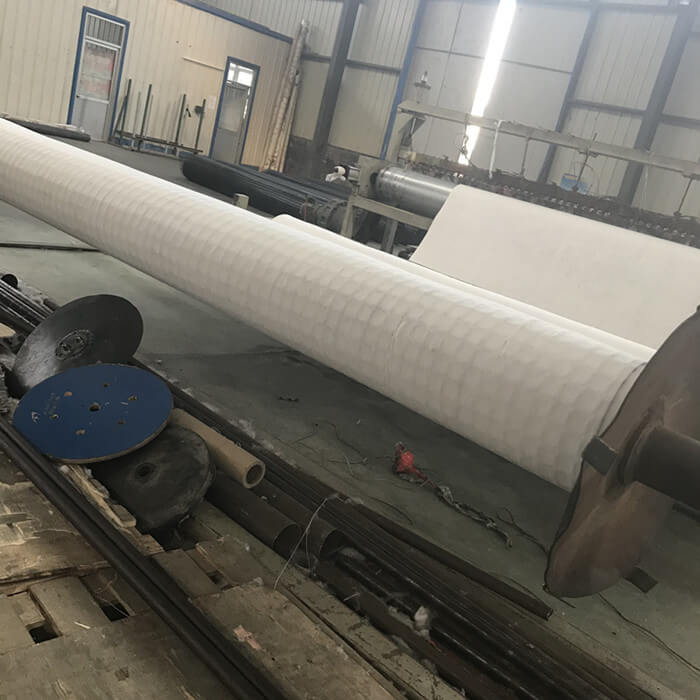- Home
- Products
- Composite Geogrid
- Polyester Fiber Geogrid composite Geotextile
- Polypropylene Biaxial Geogrid Geotextile
Polypropylene Biaxial Geogrid Geotextile
Description
Polypropylene Biaxial Geogrid Geotextile is a polypropylene extruded biaxial geogrid with a non-woven needlepunched geotextile bonded to one side.
Description of Polypropylene Biaxial Geogrid Geotextile
1. Composite biaxial Geogrid is the composite of geogrid and geotextile. The first composite form: Geogrid is self-adhesive glass fiber or polyester geogrid and geotextile is polyester filament geotextiles; second composite form: two-way plastic geogrid and geotextile composite.
2. Size of the network are the mesh size of woven fibers or geogrid.
3. The strength, width and grid size of the geogrid can be customized according to user's requirements.
| BI-AXIAL GEOGRID | MD | XD | ||
| Carbon Black Content | ASTM D 4218 | % | 2.0 | |
| Ultimate Tensile Strength{1} | ASTM D 6637 | lbs/ft(kN/m) | 1645(24.0) | 1645(24.0) |
| Tensile Strength at 2% strain{1} | ASTM D 6637 | lbs/ft(kN/m) | 720(10.5) | 720(10.5) |
| Tensile Strength at 5% strain{1} | ASTM D 6637 | lbs/ft(kN/m) | 1343(19.6) | 1343(19.6) |
| Junction Efficiency{2}{3} | GRI-GC2 | % | >95 | >95 |
| Flexural Rigidity{1} | ASTM D 7748 | mg-cm | 1000000 | |
| Aperture Stability{2}{4} | US.COE | m-N/deg | 0.65 | |
| Minimum Rib Thickness | Callipered | inch(mm) | 0.07(1.7) | 0.05(1.3) |
| Aperture Size{2}{5} | Nominal | inch(mm) | 1.33(34.0) | 1.22(31.0) |
| GEOTEXTILE | ||||
| Raw Material | Polyester, Continuous filament, needle punched | |||
| Ultimate Tensile Strength{1} | ASTM D 4595 | lbs/ft(kN/m) | 781(11.4) | 781(11.4) |
| Grab Strength{1} | ASTM D 4632 | lbs(kN) | 128(0.57) | |
| Trapezoidal Tear{1} | ASTM D 4533 | lbs(kN) | 56(0.25) | |
| Elongation at Ultimate{2} | ASTM D 4595 | % | 60 | 60 |
| CBR Burst Strength{1} | ASTM D 6241 | lbs(kN) | 540(2.4) | |
| Permeability | ASTM D 4491 | cm/sec | 0.41 | |
| Apparent Opening Size O9S | ASTM D 4751 | mm | 0.12 | |
| Mass Per Unit Area{2} | ASTM D 5261 | oz/yd2(g/m2) | 6.0(200) | |
| TYPICAL ROLL DIMENSIONS | ||||
| Roll Width | ft(m) | 12.79(3.9) | ||
| Roll Length{6} | ft(m) | 164.04(50.0) | ||
Features of
- Improving bearing capacity of road foundation and prolong its service life.
- Preventing road surface from subsiding and cracking.
- Be convenient for construction, reducing cost and maintaining expense for the project.
- Providing stability for slopes and avoid the losing of the water and soil.
- Products Geogrid Composite Geogrid Geotextile HDPE Geocell Geomembrane Composite Geomembrane HDPE GeonetDrainage GeocompositeErosion Control Mat
- Contact Us
- General Manager: Allen Mobile: +86 13854820689 Email: lianyiallen@126.com; chgeogrid@163.com WhatsApp +8613854820689 Wechat: 0086 13854820689 Skype: chgeogrid@hotmail.com
- Sales Director: Alice Mobile: +86 18953872761 Email: sdlianyigeogrid@hotmail.com Whatsapp: +86 18953872761 Wechat: 0086 18953872761

 العربية
العربية Français
Français 한국어
한국어 Русский
Русский Español
Español English
English






